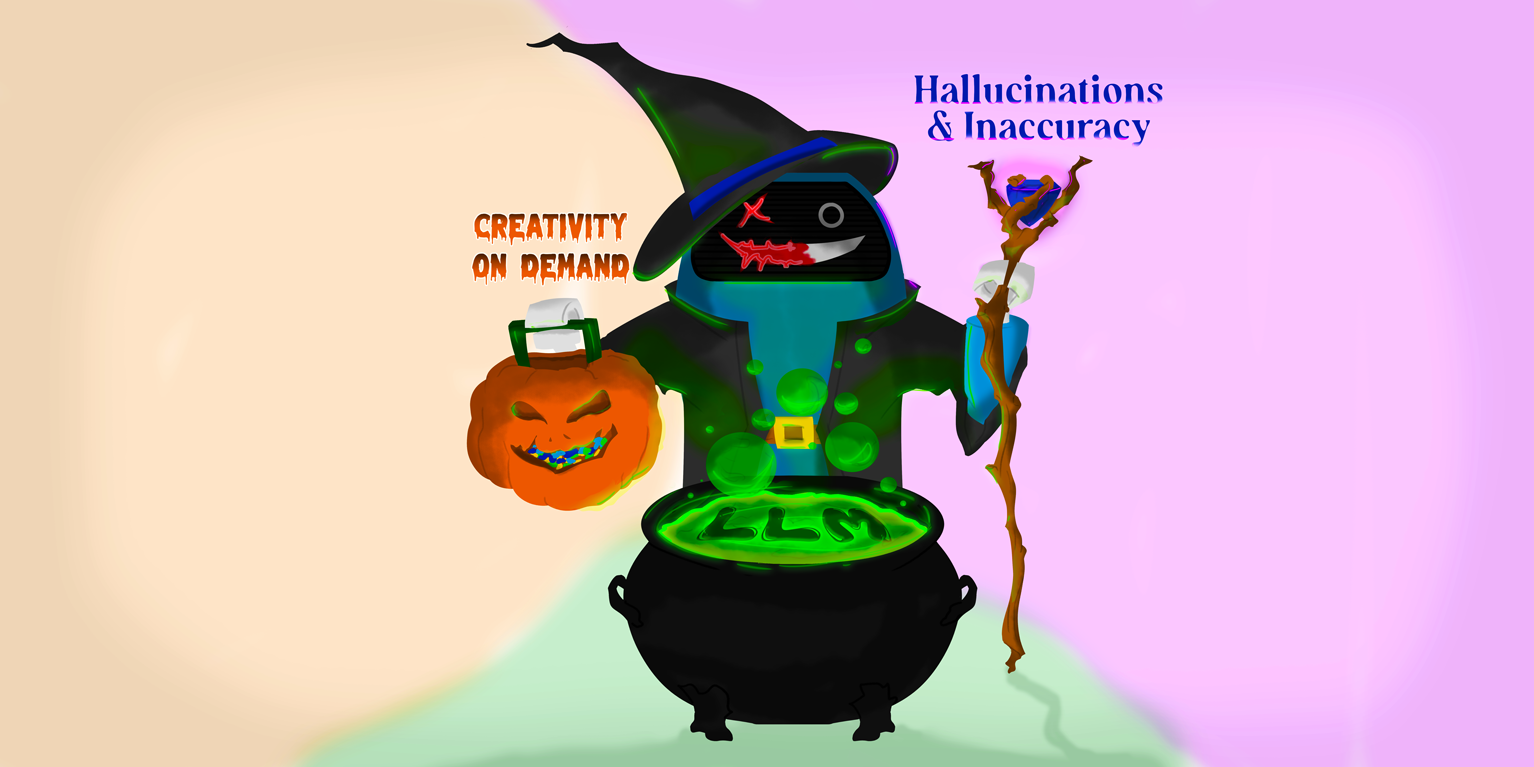AI Trick or Treat? The Rise of Large Language Models (LLMs)
Large Language Models (LLMs) are the AI superheroes of today’s tech landscape, capable of writing code, generating stories, and holding conversations that feel eerily human. In the spirit of the spooky season I ask this question: are these models always a treat, or is there a trick lurking behind their glowing promise?
The Treats: LLMs That Amaze
-
- Instant Expertise
Ever needed a quick explanation of quantum mechanics, a code snippet in Python, or a breakdown of a historical event? LLMs like GPT and its descendants can deliver. They’ve been trained on massive amounts of data from books, articles, and websites, allowing them to provide instant, human-like responses to even the most complex queries. No more hours of searching and piecing together information—LLMs bring expert knowledge to your fingertips. This is AI’s equivalent of hitting the jackpot on Halloween with a bag full of full-size candy bars. - Creativity on Demand
LLMs are increasingly used in creative industries, from generating ad copy to drafting the next novel. They help writers brainstorm ideas or create entire drafts, providing a creative spark for those suffering from writer’s block. Need a spooky Halloween story on short notice? An LLM can conjure up a tale faster than you can light a jack-o’-lantern. The ability to generate content quickly and coherently is a true treat for anyone working in content creation. - Conversational Companions
The conversational abilities of LLMs have rapidly advanced, making chatbots and virtual assistants far more capable. They understand context, respond with nuance, and can even adjust their tone based on user input. For customer service, education, and entertainment, this is a game changer. Gone are the days of stilted, robotic interactions—LLMs create a smoother, more intuitive experience for users. It’s like getting a personalized trick-or-treat response at every door.
- Instant Expertise
The Tricks: Where LLMs Fall Short
-
- Hallucinations and Inaccuracy
Despite their impressive capabilities, LLMs have a glaring flaw: they sometimes make things up. Known as “hallucinations,” these fabricated facts can be as simple as wrong dates or as dangerous as incorrect medical advice. The models don’t truly understand the information they generate; they’re simply predicting the most likely sequence of words. This means you can never be fully sure if what you’re reading is factual. It’s like biting into a piece of candy, only to realize it’s filled with something strange—unexpected, and not in a good way. - Biases Hidden in the Data
LLMs learn from data scraped from the internet, which means they can inherit the biases, stereotypes, and misinformation that exist in the wild. This becomes a major trick when harmful language or biased perspectives sneak into the outputs. While developers have worked to address this, it’s still a spooky aspect of LLMs that can rear its head at any time. If your AI assistant suddenly starts offering problematic advice or opinions, it’s more trick than treat. - The Black Box Problem
One of the scariest things about LLMs is their opacity. Even the experts behind these models often can’t explain exactly why they generate certain responses. This “black box” nature is unnerving, especially when LLMs are being used in critical fields like law or medicine. In some cases, these models are trusted with high-stakes decisions, but without transparency, it’s hard to tell whether the AI is truly reliable. It’s like trusting a masked stranger at your door—do you really know what you’re getting?
- Hallucinations and Inaccuracy
LLMs: A Trick or Treat?
LLMs represent both the best and the most concerning aspects of AI today. They can produce impressive results, making them a treat for users in need of quick information, creative content, or conversational engagement. But they can also mislead with inaccuracies, perpetuate biases, and operate in ways that are difficult to fully understand, making them a potential trick if handled carelessly.
In the end, LLMs are like the mixed bag of candy you get on Halloween—some pieces are pure delight, while others might leave you wary. The trick is to know when to indulge and when to be cautious.
If you missed it, check out Three Tips for Bringing AI Into Your Strategy Planning. Stay tuned for our next blog, to see how we have approached AI integration into StrategyBlocks 6 so our customers can reap the treats of AI in strategy creation.




Leave A Comment